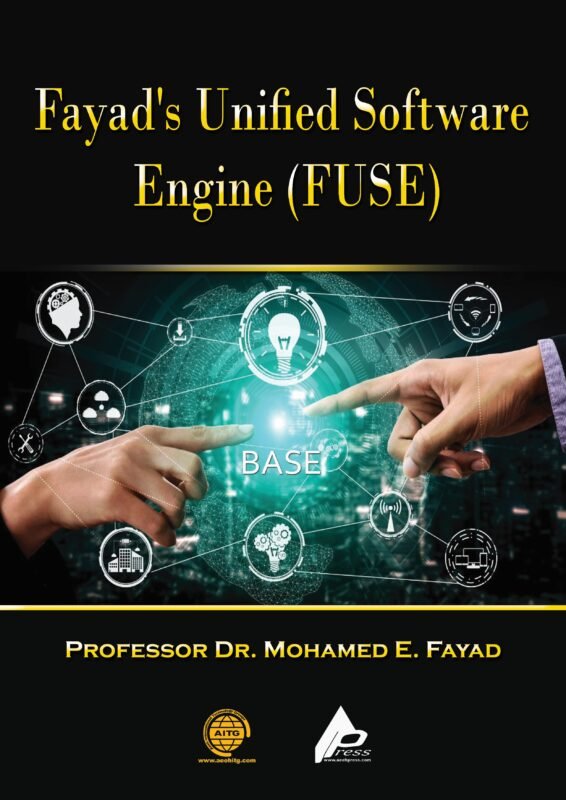
Fayad’s Unified Software Engine(HR-FUSE)
Human Rights Unified Software Engine
(HR-FUSE)
Professor Dr. Mohamed E. Fayad
Human Rights Unified Software Engine (HR-USE) is a multi-purposes social network engine that provides many ways for any person to report a complaint for one or more reasons with evidence. The engine provinces analysis of this complaint using content mining and visualization techniques looks for any violation to human rights rules. The engine keeps track of different types of violations and categorizes and records the violation in many different logs that will leads to generate many different reports. The engine provides many different supports to their users, such as advises of what to do, notifications of the responsible and authorized parties, consulting, and legal guidelines and actions.
The HR-USE provides complaint management, reason and evidence analysis, true violation discovery and severity assessment, human right violation early warning and preventive measures, human rights monitoring, risk identification, analysis and assessment, solution scenarios generation, illustrate scenarios with different actors and parties and simulate their roles in any human rights violations, generate all the data needed to be analyzed, visualized, and animated and can be utilized in unlimited humn rights violations at all levels world-wide. The HR-USE covers a large number of aspects or mechanisms focused on geographic aspects, (combination of spatial data and temporal data), combined political and economic dimensions, right-based approaches, human rights violation dynamism, structural root causes of human rights violations, understanding of the roots of any human rights violations, human security and human rights, event data analysis (qualitative and qualitative), devising evidence-based peace-building and strategies, aid fostering long-term reconciliation and recovery, etc. The HR-Engine generates gigantic volumes of many different types of data driven from the above mentioned aspects and mechanisms, such as spatial, temporal, views, analytical, political, economic, event-driven, behavioral, stack-holder data, and historical data For example, Spatial data is the data or information that identifies or detects the geographic locations of various features and boundaries of where the human rights violation exists. Data can also be temporal in nature, i.e. temporal data is such that it is valid only for a certain extent in time and has an expiry date and time to it. Currently, most of the research efforts on data mining in geospatial data take the static view of geospatial phenomena, which captures only one aspect of data, i.e. ‘spatiality’ only. However, as all geographic aspects evolve slowly over time, both ‘spatiality’ and ‘temporality’ is central to our understanding of geographic process and events. The HR-Engine extracts and culls knowledge and skills from spatiotemporal data that will help us to have better prediction of spatial processes or events over time. HR-Engine extracts other data, such as stake-holder behavior data, economic data, political data will shed understanding of the conflict situation and predicate on possible resolutions.
Main Goals
Specific Goal 1: To formulate a large-scale prototype including its Knowledge Map and Architecture for the proposed system. The core knowledge forms an engine called ‘HR-USE that can be extended, adapted to different needs, and customized. HR-USE has many additional properties, such as (a) Runs online all the time like search engines, (b) Provides unlimited spatial, temporal, and spatiotemporal applications, (c) Has unlimited capabilities, such as algorithms and mechanism, (d) Does not require prior investment needed, (e) Has provisions of high security and privacy, (f) Handles unlimited number of Users/Usages, (g) Limits cost per usage (Royalty, Subscriptions, and Memberships), (h) Handles unlimited number of applications (RUNS) in the same time, (i) Shows a level of needs and demand for a giving technology (Evaluation of Technology), (j) Available all the time for usage online ranges from single users (individuals) and large enterprises, (k) Has no maintenance and license fees – no prior fees for using the engine, (l) Runs multiple algorithms on a complex aspects’ dataset and provide comparative results, (m) Easy to adapt, customize, extend with many different kernels, such as visualization, animation, etc., and (n) collect unlimited types of data and contents including live data on the spot, such as videos, pictures, environmental conditions, recordings, etc..
Specific Goal 2: To develop an easy, web-based portal/interface to HR-USE, a single entry interfaces. It takes Any Log (i.e. file), which contains different types of human rights violations data and contents to be mining, analyzed, assessed, visualized, animated and shows one or more logs which contains the data results. The web-based provides hidden pages that will track and show several trends about the number of users, number of members, number of subscribers, and number of transactions daily, weekly, monthly, etc., with meaningful curves. Also, use of mechanisms’ frequency and durations as bases to compare different mechanisms and aspects, mechanisms’ findings, and suggest actions to be taken – Use tables and curves to compare the frequency and duration of all the mechanisms and to compare data results and show the similarities and differences of using different aspects and mechanisms.
Specific Goal 3: Collect and document of the HR-USE core knowledge (analysis, design, architectural) patterns. We plan to collect, analyze, and document all the stable core knowledge patterns of the entire knowledge map based on software stability.

